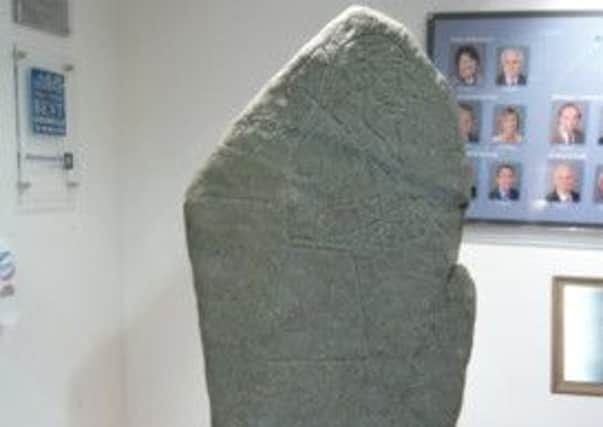Villagers demand return of Pictish ‘Rhynie Man’


“Rhynie Man”, a mysterious figure carved on a 6ft-tall slab of stone, was uncovered in Aberdeenshire 35 years ago as local farmer Gavin Alston was ploughing a field on the outskirts of the eponymous village whose name the figure bears.
Widely acknowledged as the finest carved single figure in Pictish art ever found in Scotland, Rynie Man currently graces the entrance to the Woodhill House headquarters of Aberdeenshire Council in Aberdeen.
Advertisement
Hide AdBut a female artists’ collective in the village, known as “Rhynie Woman”, is spearheading a campaign backed by the local community council to have Rhynie Man returned to the village to help boost tourism.
They hope visitors will be drawn by the growing archaeological evidence that Rhynie was once a major royal stronghold during the age of the Picts.
Archaeologists began uncovering evidence of Rhynie’s role as a seat of Royal Pictish power two years ago during excavations in the area close to the spot where the Rhynie Man was unearthed in 1978.
Earlier this month it was revealed that the remains of a body, believed to be that of a Pictish prince or princess, had been uncovered in a carefully made sandstone grave at the site.
The growing importance of Rhynie has spurred local artists Deborah Beeson, Daisy Williamson and Hayley Keane to mount a campaign to secure the return of Rhynie Man. “We want him brought back to Rhynie,” said Ms Beeson.
“At the moment he is sitting at Woodhill House where he stands alongside all the mugshots of the council employees and is pretty much ignored. He is just taken for granted standing there.
Advertisement
Hide Ad“It’s not just about having this particular artefact returned to the village – it’s also about linking him with the other places of interest in the area as well.
“We have a huge archaeological heritage which is only now becoming known about and we want to attract more visitors to the area to help boost local businesses.
Advertisement
Hide Ad“Rhynie Man is incredibly important to this area. He is unique in Pictish symbol stones. There has been nothing like him found anywhere else.”
The artists collective have already begun raising funds to help secure the stone’s return. One of their fund raising ideas is a modern “Rhynie Man” calendar featuring local men folk.
Kate Hunter, the secretary the local Tap o’ Noth community council said: “After the stone was first unearthed, Rhynie Man was housed in a small museum in the primary school until that was dismantled. It was decided then it should go to Aberdeen and everybody at that time allowed it to happen. Maybe that was the time to fight to keep it but nothing was done.”
A spokeswoman for Aberdeenshire Council said: “When Rhynie Man was first discovered, the option of locating it within Rhynie was explored but no suitable secure location with public access and environmental control was identified. Woodhill House was seen as an acceptable alternative location. A fibreglass replica was installed at the entrance to Rhynie School.”